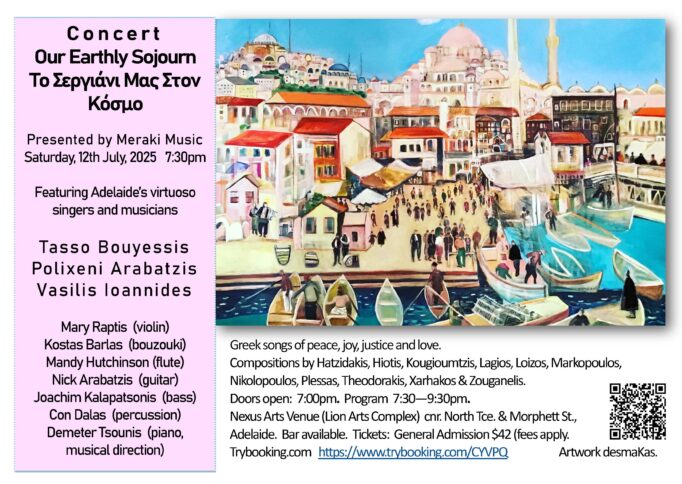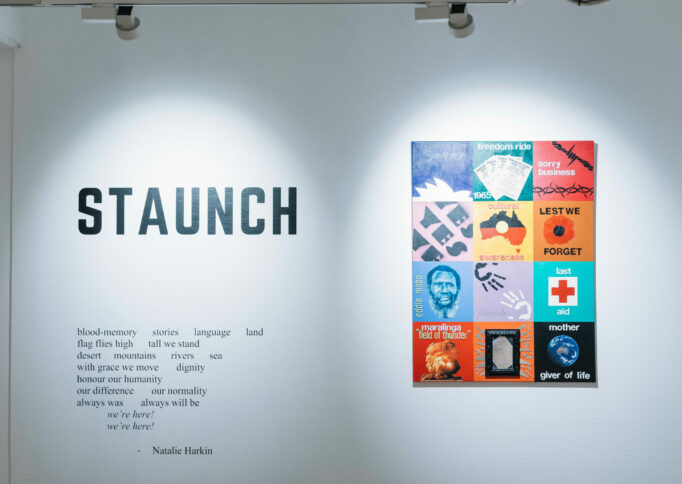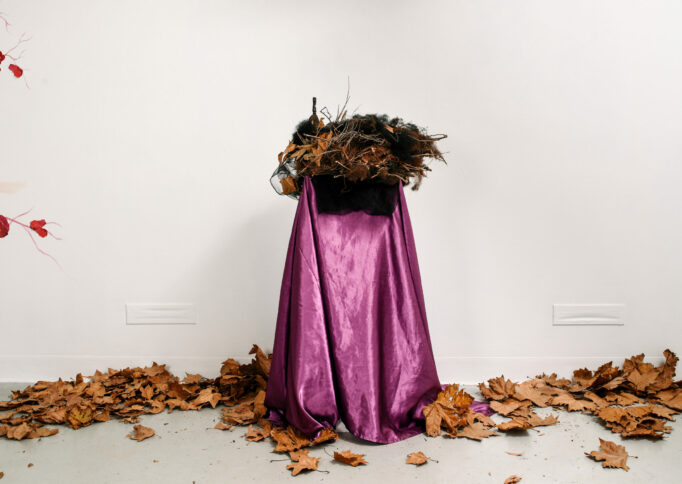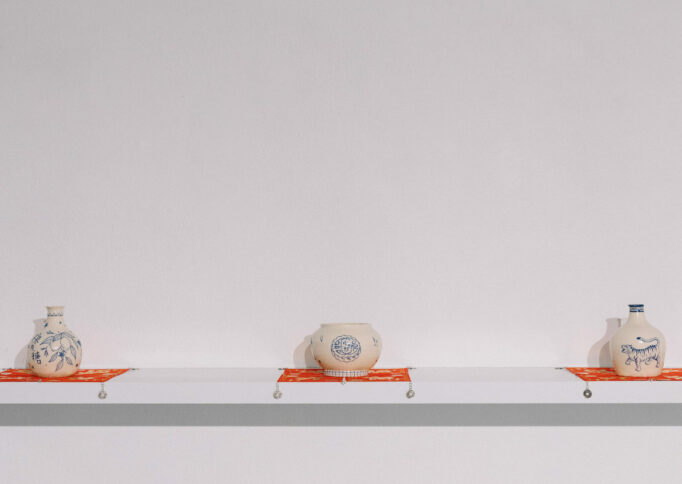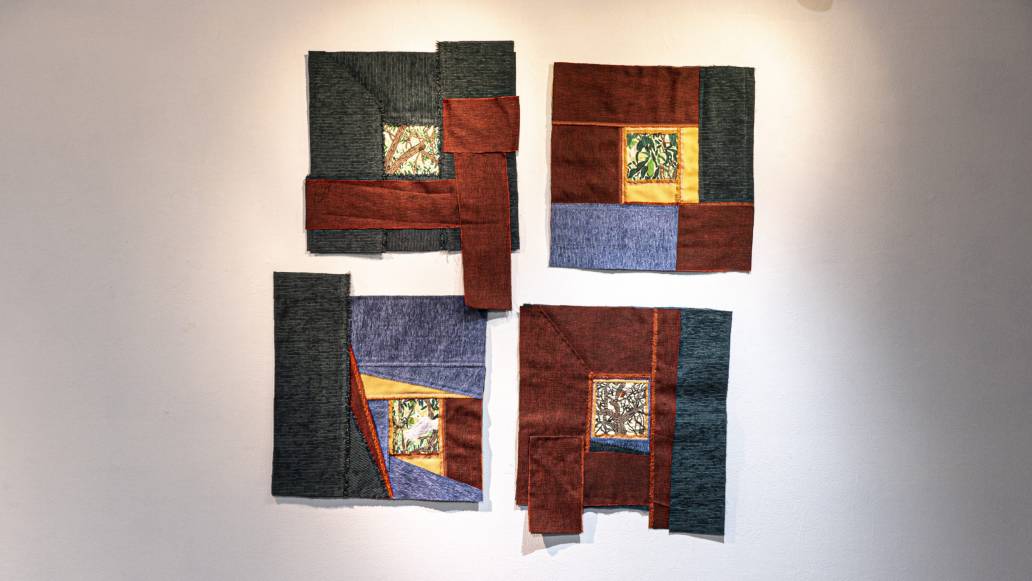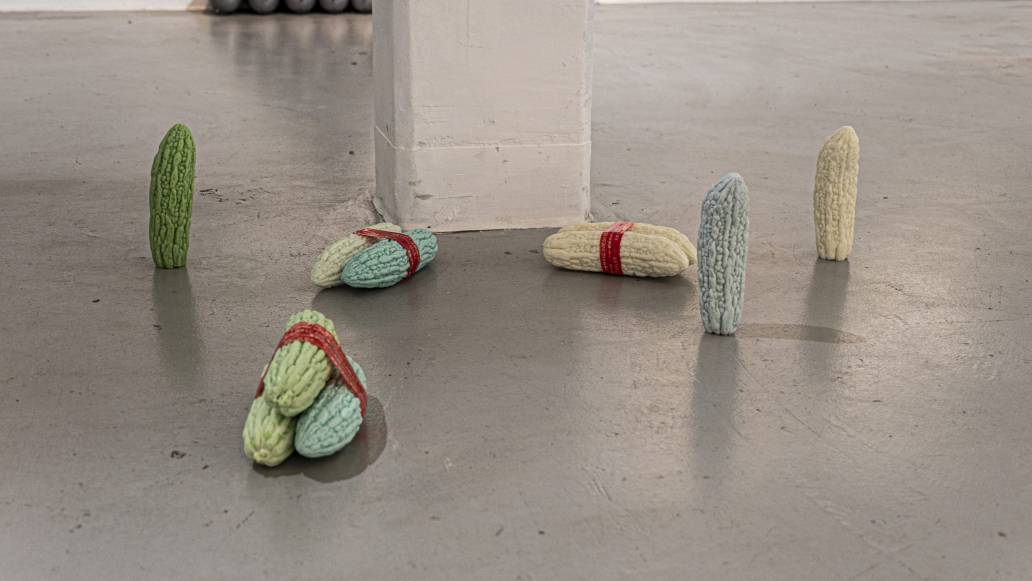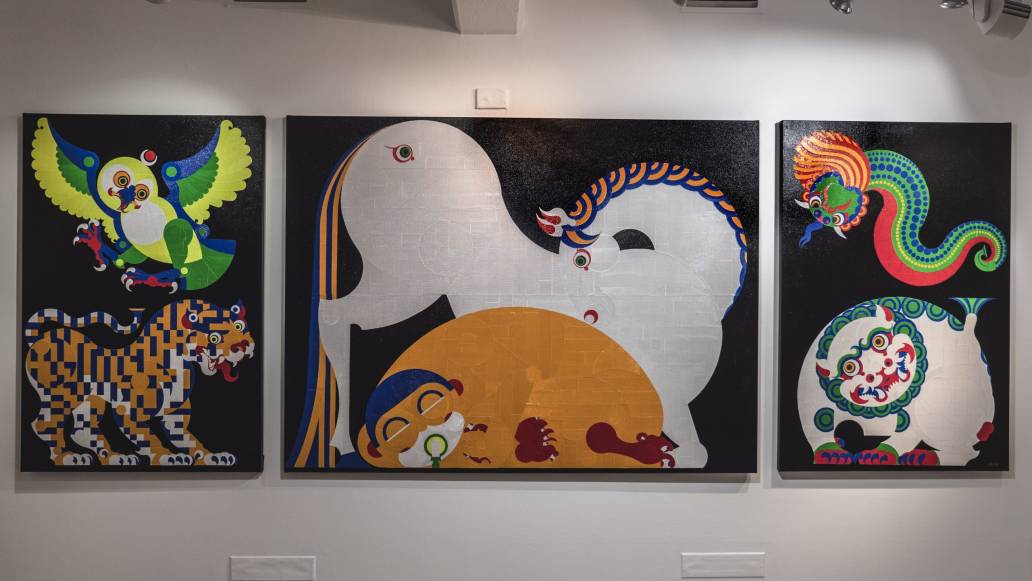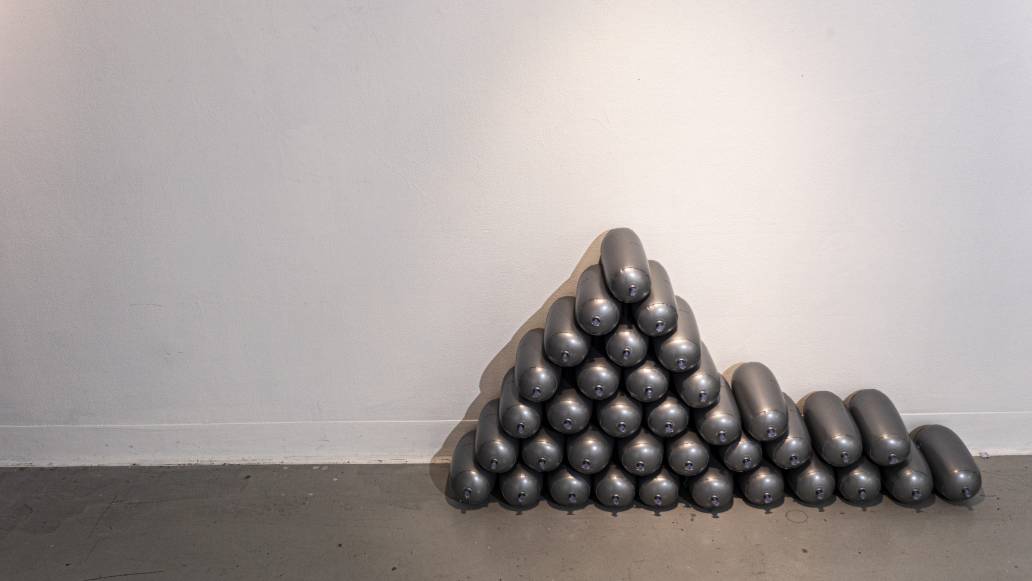Exhibition
East Wind
Curated by Jonathan Kim
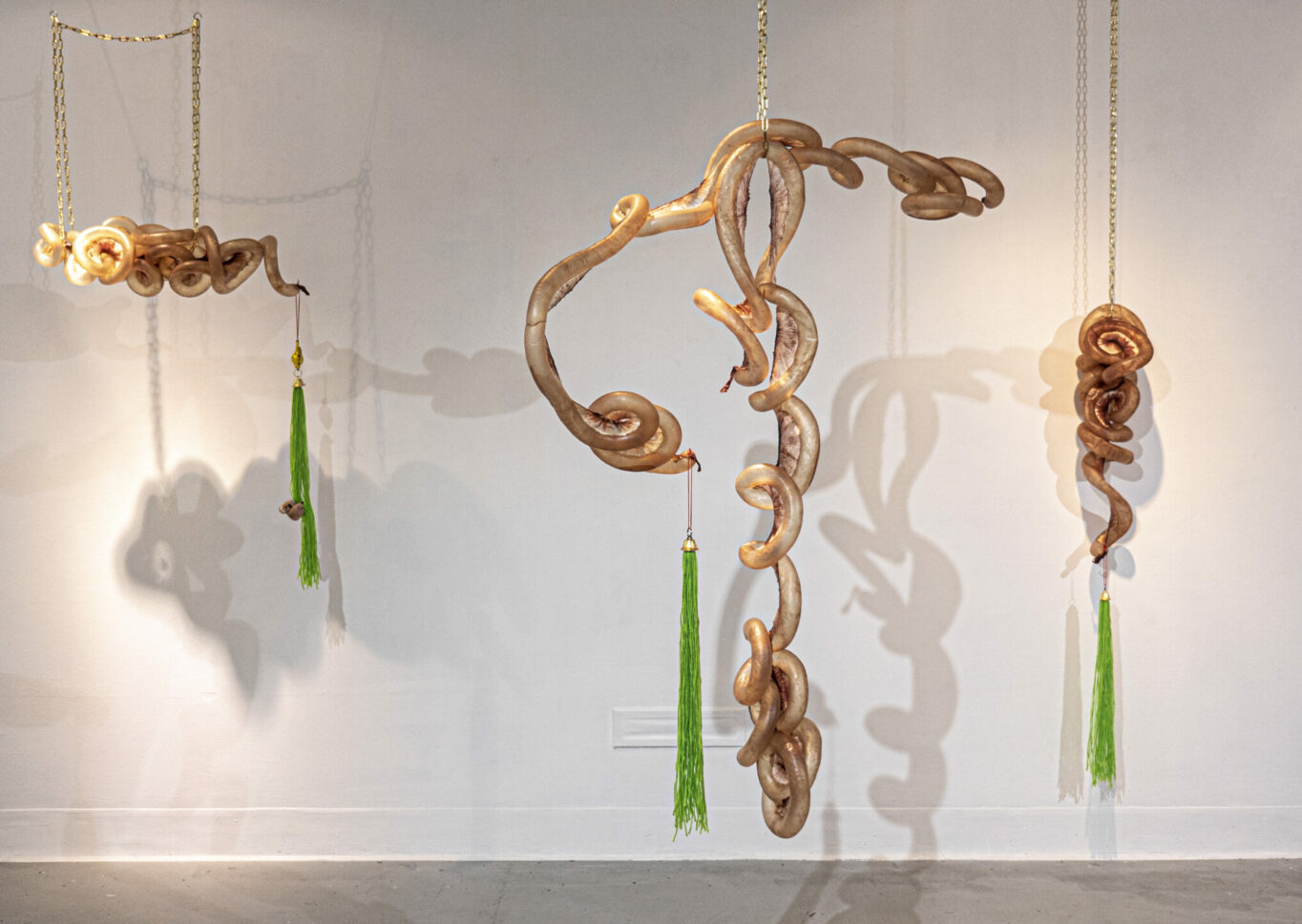
About the exhibition
East Wind, curated by Jonathan Kim, presents the works of six emerging artists from different East Asian cultural backgrounds. These artists, from Korea, China, Japan, Vietnam, Tibet and Mongolia, are connected through their visual arts degrees from the University of South Australia.
The exhibition reveals the artists’ experiences of creating new work in isolation, reflecting on their immediate and familial surroundings. Two of the artists who flew back to China and Japan at the beginning of 2020 and are now unable to return to Australia, created their work under different restrictions to the artists who remained here making work in South Australia, during the global pandemic.
East Wind highlights and celebrates the progression of these emerging artists currently living in South Australia from geographically, politically and socially distinct East Asian backgrounds.
Featuring Artists: Bin Bai, Jonathan Kim, Seiichi Kobayashi, FangYi Kuang, Truc Truong and Meng Zhang
Explore the exhibition
-
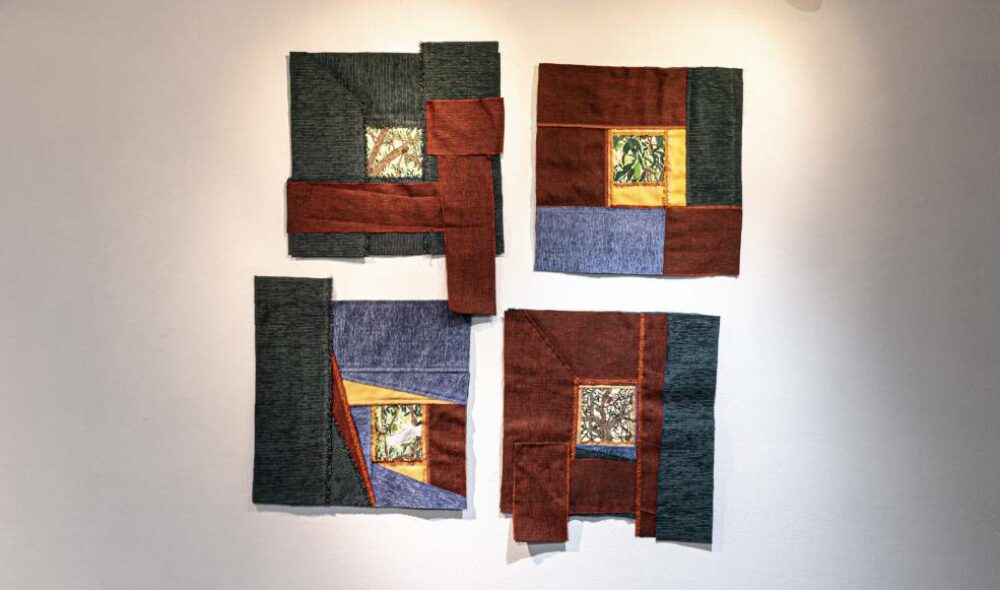
- Artwork Walnut Tree
- Artist Meng Zhang
- Year 2021
- Medium Embroidery and Fabric
- Size 52 x 52 cm each
- Price Not For Sale
Meng Zhang is an emerging artist, born in Inner Mongolia, China. She began studying in Adelaide in 2010. She is an observer and recorder, using different ways to record what she has observed in daily life. Meng is fascinated by recording the unexpected, unintended and something said by the material. To observe, to record, to reflect, to consider retrospectively and then to save the unintended and improvised, to save voice from materials and to save the details of daily life. Meng broad-ranging practice involves printmaking, photography, video, drawing, sculptural and installation.
“During COVID 19, as the inability to move, it allowed me to establish intimate feeling with the surroundings. Through observation and recording, I tried to slow down and to reconnect with the soil, with the space and time. The work made by series observations of my backyard walnut tree. The walnut tree growth and fruits. The parrot came to taste the walnut. Then everything falls. I grow up in a rural society which is a society without a written language. The influence from rural society imprinted in my mind and rooted in my blood. The work is my poem, written by fabric and thread.”
-
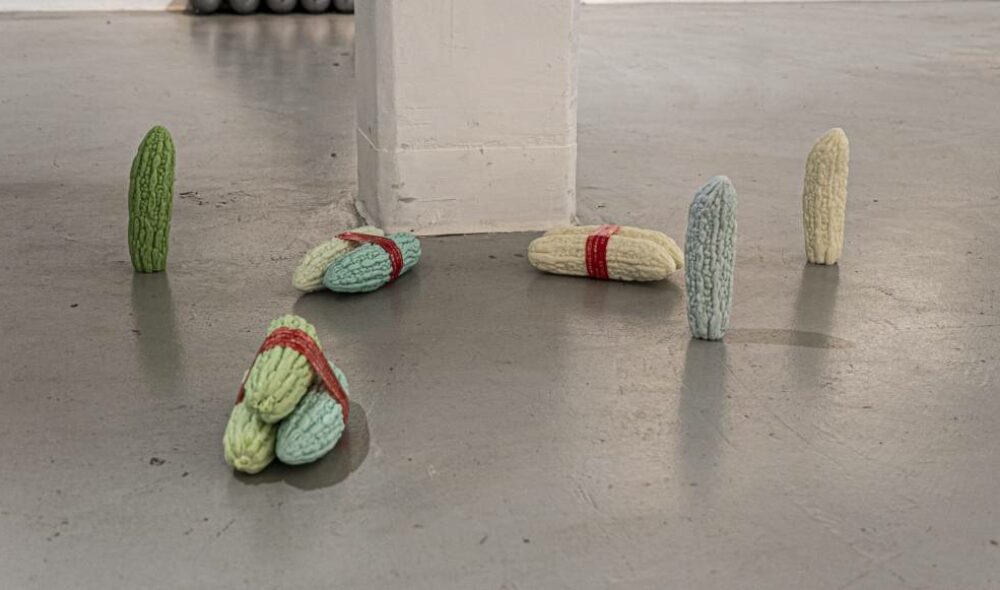
- Artwork Be better not bitter
- Artist Truc Truong
- Year 2021
- Medium Wax, packing tape
- Size Various sizes
- Price Single $80, Double $160, Triple $240
“During COVID-19, I found my practice thrown into confusion over what to make and how to make, confided by government restrictions, and a lack of resources, I was continually thinking of what it meant for the future of artists and how I would adapt. I had to make-do with what was available.
My grandparents on my dad’s side raised 15 of their kids in Long Thanh Vietnam, and my grandparents on my mum’s side raised 9 of their kids in Saigon Vietnam. By the time my uncles and aunts were 5, they were sent to the bustling markets to haggle and buy food for the family. Sometimes they had enough access to food, and sometimes they had to make-do with what was available.
Many of the Vietnamese dishes I grew up eating, such as cháo long, bún bò huế, and phở bò, were made humbly through resourcefulness, using many different parts of the animal, a way to feed the whole family and not waste food. Throughout lockdown, my mum spent hours in the kitchen preparing dinner for the family, making use of what we had and using the time to reconnect. I spent most of the lockdown with my parents, listening to what they ate growing up, and again, what life used to be like in Vietnam pre 1975.”
-
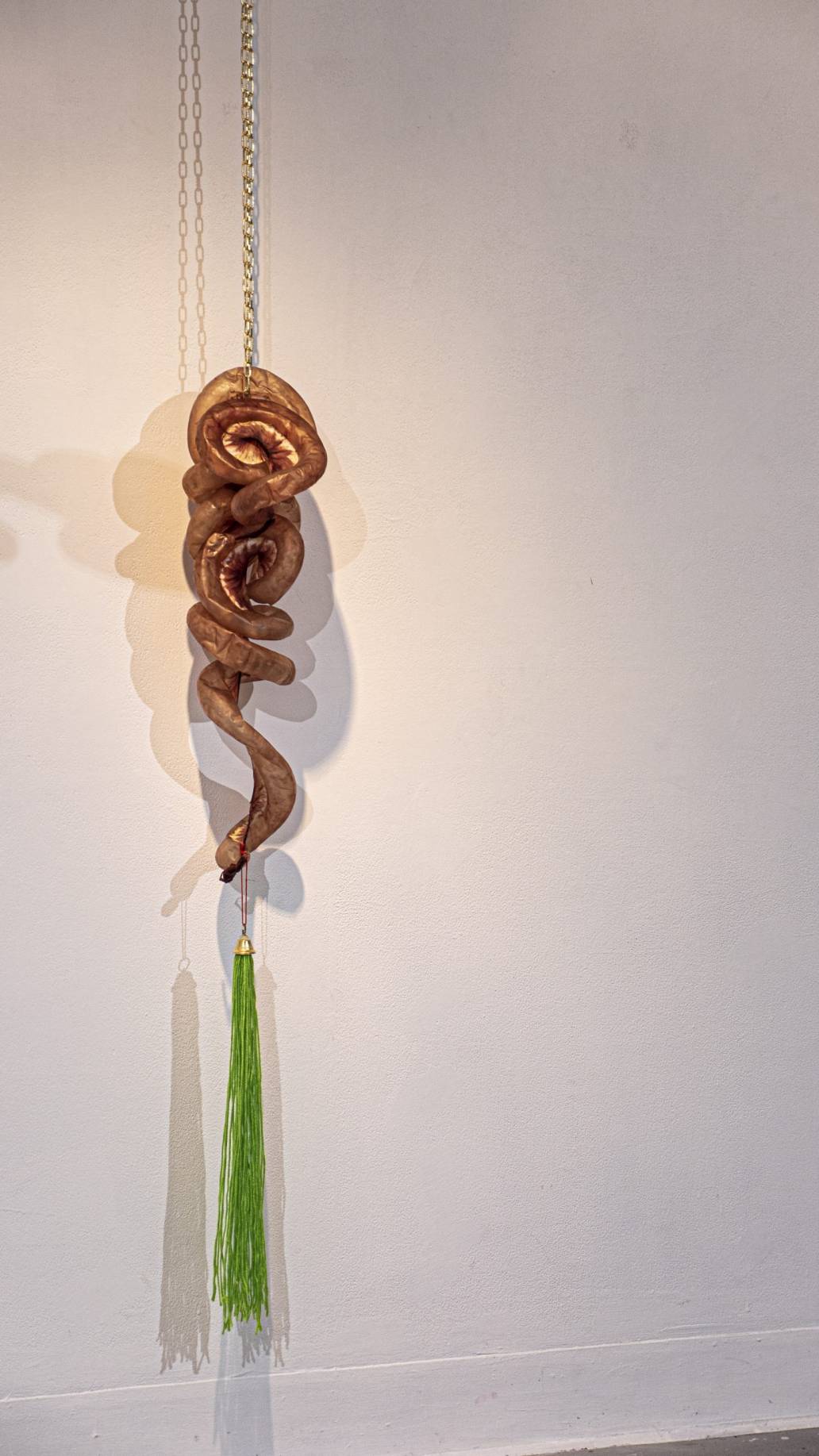
- Artwork Balance III
- Artist Truc Truong
- Year 2021
- Medium Pig intestines, bell, wool, brass dimpled chain
- Size 100 x 25 x 25 cm
- Price Not For Sale
-

- Artwork Balance II
- Artist Truc Truong
- Year 2021
- Medium Pig intestines, bell, wool, brass dimpled chain
- Size 100 x 100 x 30 cm
- Price Not For Sale
“Ruột heo kho cải chua (pig intestines and fermented greens) is a dish my sister and I love. It was one of the dishes, and experiences, that lead me to learning about my Otherness, how to live in two worlds, and not ever feeling truly accepted by both.
As a young girl, I quickly learnt how to hide my Vietnamese culture when at school, my strategy of not being teased about being Asian, was to publicly reject what my parents had taught me before anyone could mention it. In front of my classmates, I also agreed that my mum making intestine stew was disgusting! But at home, I enjoyed it and ate it happily, thanking my mum every time she made it.
This work investigates the gut and brain connection, and the importance of gut function as a link to physical and mental health. What is the value of food, memories, and family when considering the importance of guts? It takes guts to watch your kids grow up being ashamed of their own heritage. Thank you Ba and Me, for giving me the guts to come back.”
-
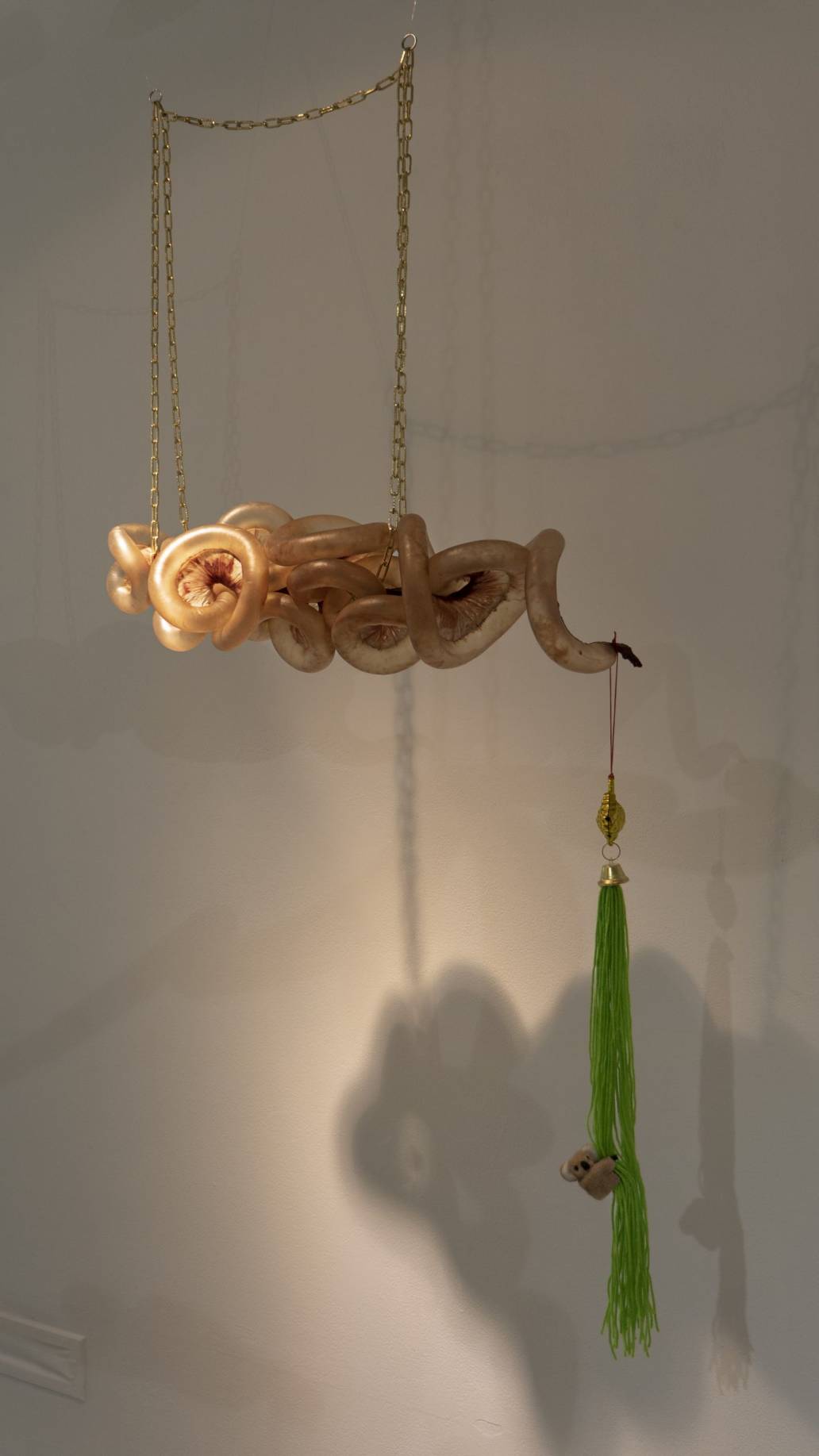
- Artwork Balance I
- Artist Truc Truong
- Year 2021
- Medium Pig intestines, bell, wool, Australia day koala, brass dimpled chain
- Size 60 x 100 x 25 cm
- Price Not For Sale
“Ruột heo kho cải chua (pig intestines and fermented greens) is a dish my sister and I love. It was one of the dishes, and experiences, that lead me to learning about my Otherness, how to live in two worlds, and not ever feeling truly accepted by both.
As a young girl, I quickly learnt how to hide my Vietnamese culture when at school, my strategy of not being teased about being Asian, was to publicly reject what my parents had taught me before anyone could mention it. In front of my classmates, I also agreed that my mum making intestine stew was disgusting! But at home, I enjoyed it and ate it happily, thanking my mum every time she made it.
This work investigates the gut and brain connection, and the importance of gut function as a link to physical and mental health. What is the value of food, memories, and family when considering the importance of guts? It takes guts to watch your kids grow up being ashamed of their own heritage. Thank you Ba and Me, for giving me the guts to come back.”
-
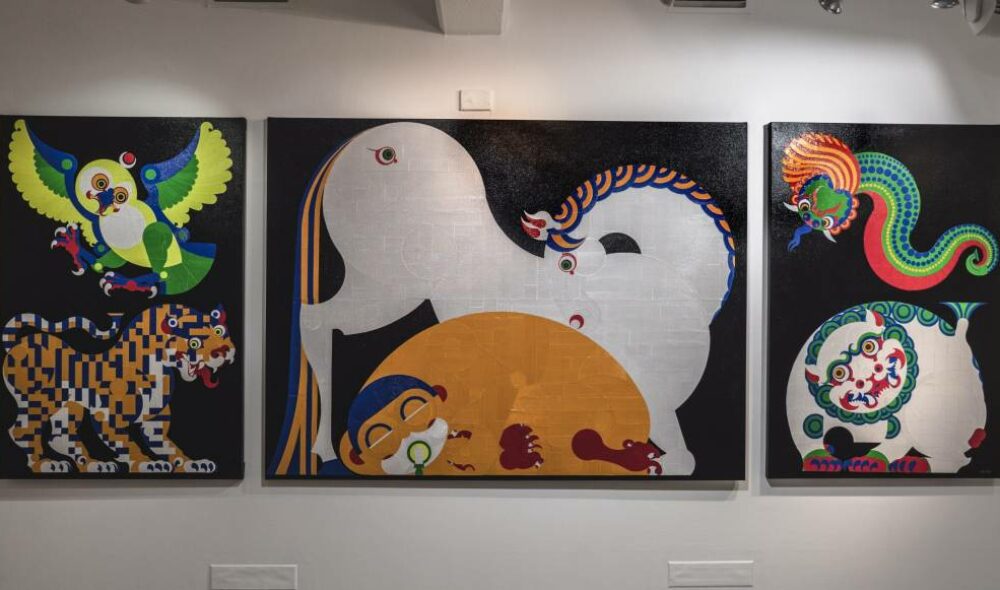
- Artwork Space Horse
- Artist Bin Bai
- Year 2021
- Medium Reflective tapes, printing paper and acrylic paint on canvas
- Size 365 x 137 cm
- Price $16,000
Space Horse was created with the mixed medium of reflective tapes, printing paper and acrylic paints on canvas. Due to the concept of this work and the reflective materials applied, an alternative and better way of viewing this work could be using a phone camera with flash light on or light up a torch in a dark environment. In regard to the East Wind exhibition at Nexus, this work was a response to one of the questions on how the artist looks at the still ongoing Covid 19 pandemic that was first discovered at the end of 2019. Since then the human beings as whole have found themselves living in an ever perilous age and were overwhelmed by all sorts of uncertainties and panics. Near 3 million souls so far were lost in this wide spread disease. This work is dedicated to the people died of this disease. The conceptual formation is based on the Tibetan archaic beliefs that after people past away, their souls will be carried by the horse to the peaceful realm and protected by the four majestical creatures. The philosophical interpretation of the iconography tells that the horse represents the space. The four other animals represent four basic elements in the space, tiger representing the Wind, eagle owl representing the Fire, serpent representing the Water and snow lion representing the Earth. These basic elements are vital for the survival of those who are alive, and therefore still are the best symbolic offerings for the deceased, whose wondering souls need our solace and commemoration.
-
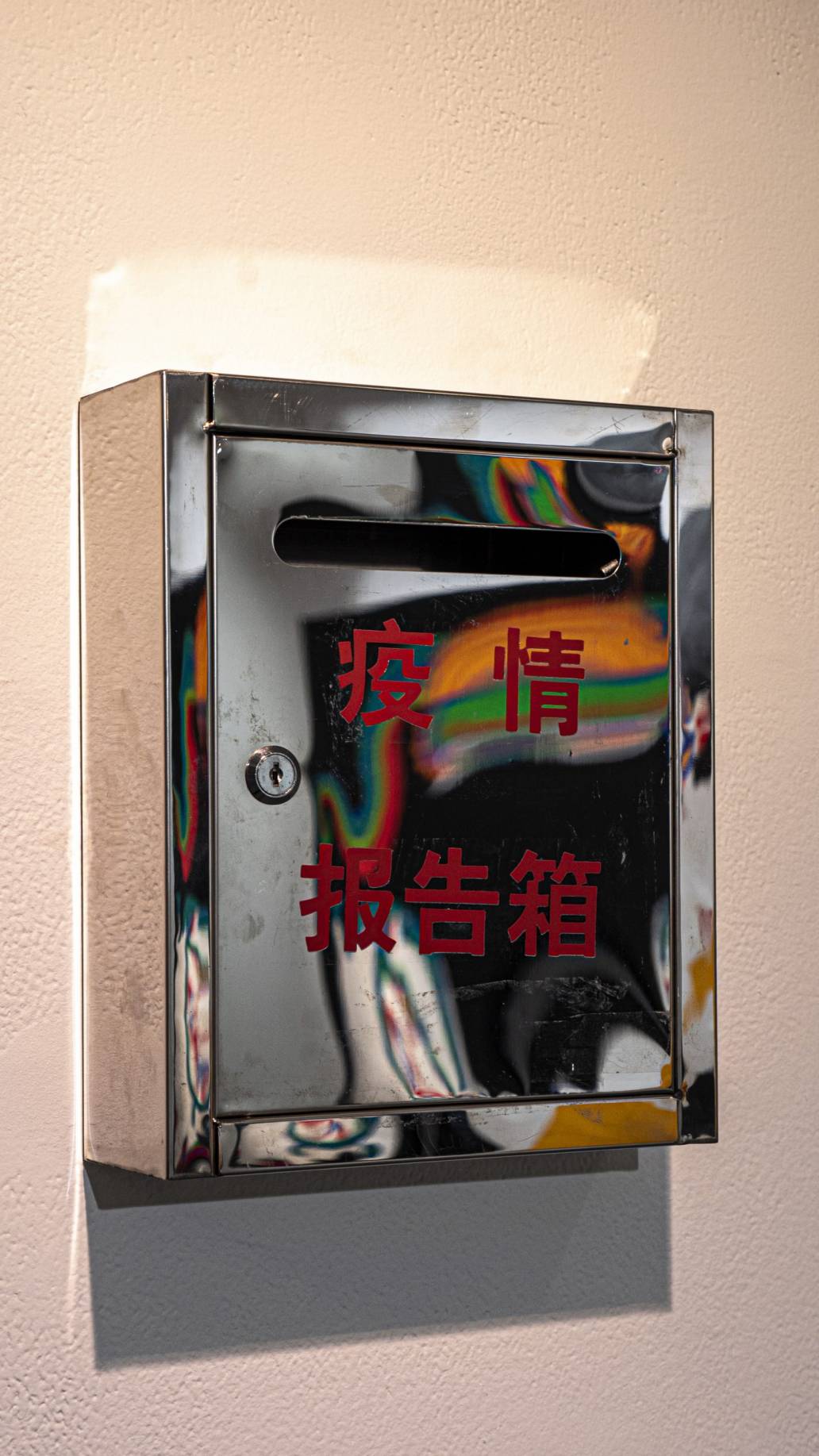
- Artwork Side A
- Artist Fang-Yi Kuang
- Year 2021
- Medium Stainless Steel
- Size 20 x 8 x 30 cm
- Price $350
“On the 16th of January 2020, my mother and I was fortunate to return to China three days before the outbreak of Coronavirus. This epidemic has brought the entire society into a drastic change physically, mentally and virtually. It accelerated the dependence of obtaining information through network, we result with overloaded information unable to process.
The form of this exhibition is quite different. It breaks through the fixed scope of exhibition and creates a wider scope of exhibition space through the way of information and logistics transmission, forming an invisible span, allowing the works and the audience to approach different senses, leading on the discussion on distance between the works and the audience through three layers of different forms (interaction, reaction, and coexistence). I intend to discuss the current social phenomenon through the works, and introduce the other side of the dialogue into the exhibition hall, so as to create a new rendezvous space.”
-
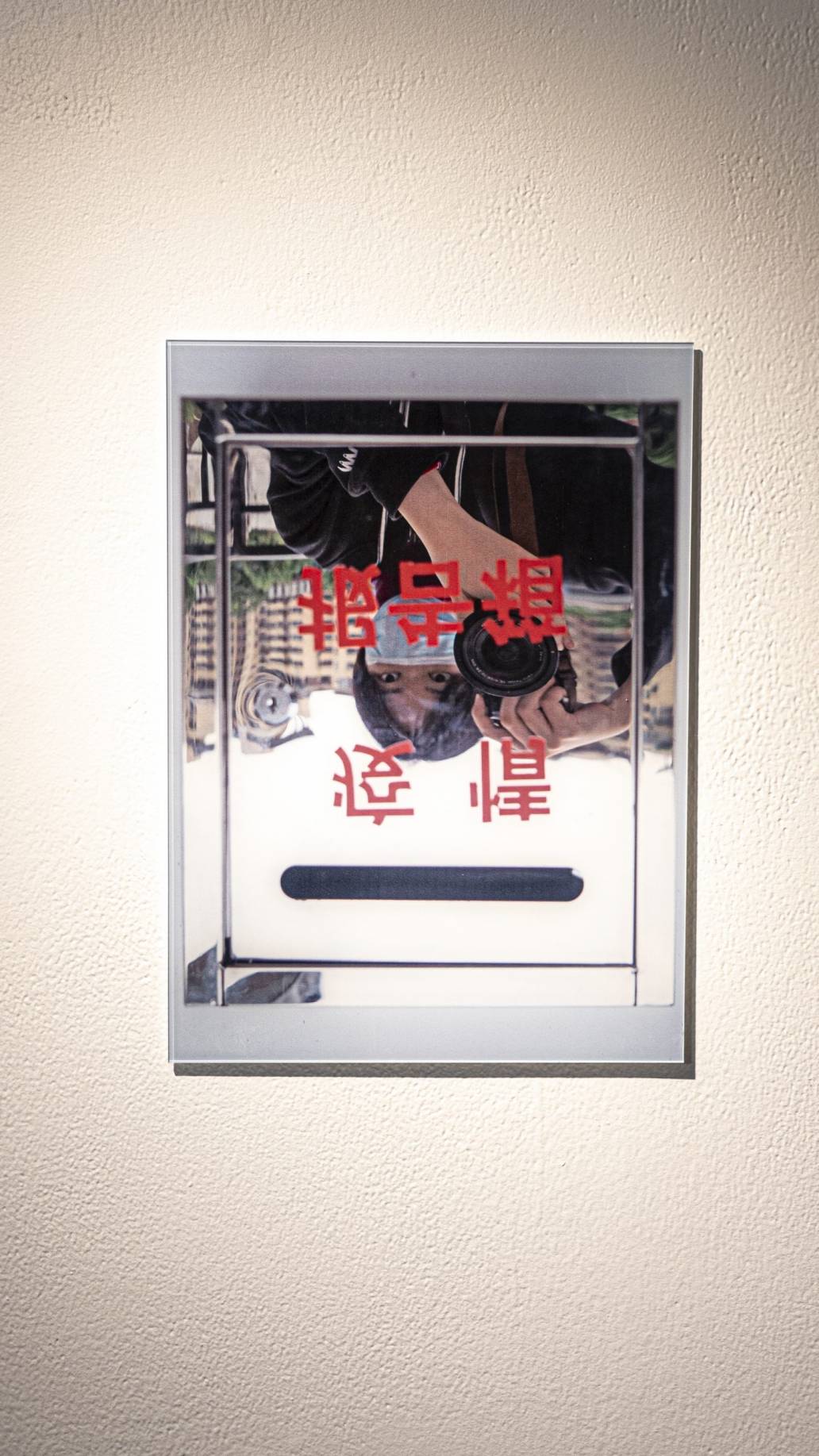
- Artwork Side B
- Artist Fang-Yi Kuang
- Year 2021
- Medium Print on Acrylic Panel
- Size 26 x 36 cm
- Price $450
“On the 16th of January 2020, my mother and I was fortunate to return to China three days before the outbreak of Coronavirus. This epidemic has brought the entire society into a drastic change physically, mentally and virtually. It accelerated the dependence of obtaining information through network, we result with overloaded information unable to process.
The form of this exhibition is quite different. It breaks through the fixed scope of exhibition and creates a wider scope of exhibition space through the way of information and logistics transmission, forming an invisible span, allowing the works and the audience to approach different senses, leading on the discussion on distance between the works and the audience through three layers of different forms (interaction, reaction, and coexistence). I intend to discuss the current social phenomenon through the works, and introduce the other side of the dialogue into the exhibition hall, so as to create a new rendezvous space.”
-
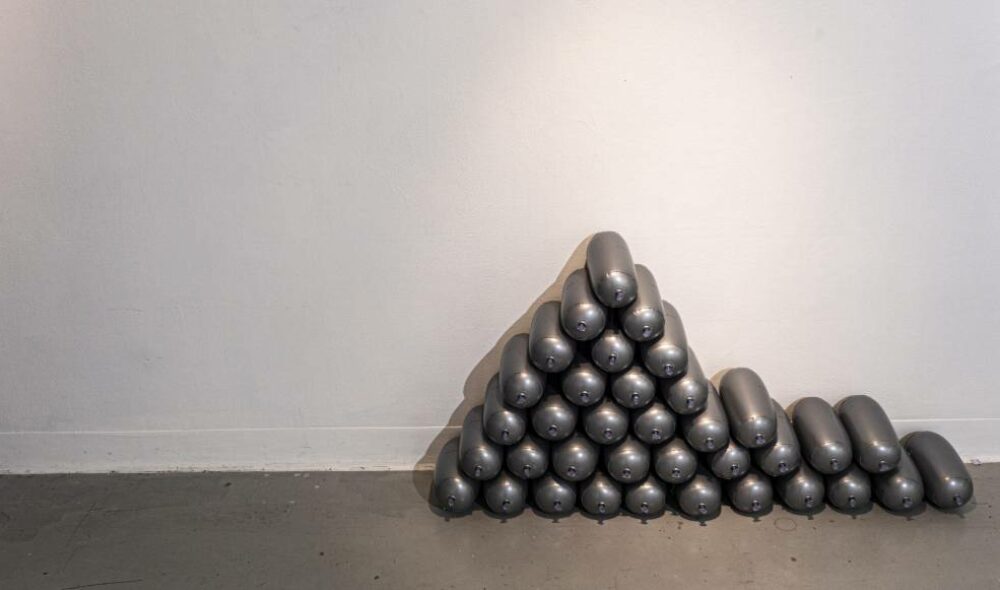
- Artwork Hidden Edge
- Artist Fang-Yi Kuang
- Year 2021
- Medium Oxygen and plastic
- Size Dimensions variable
- Price $650
-
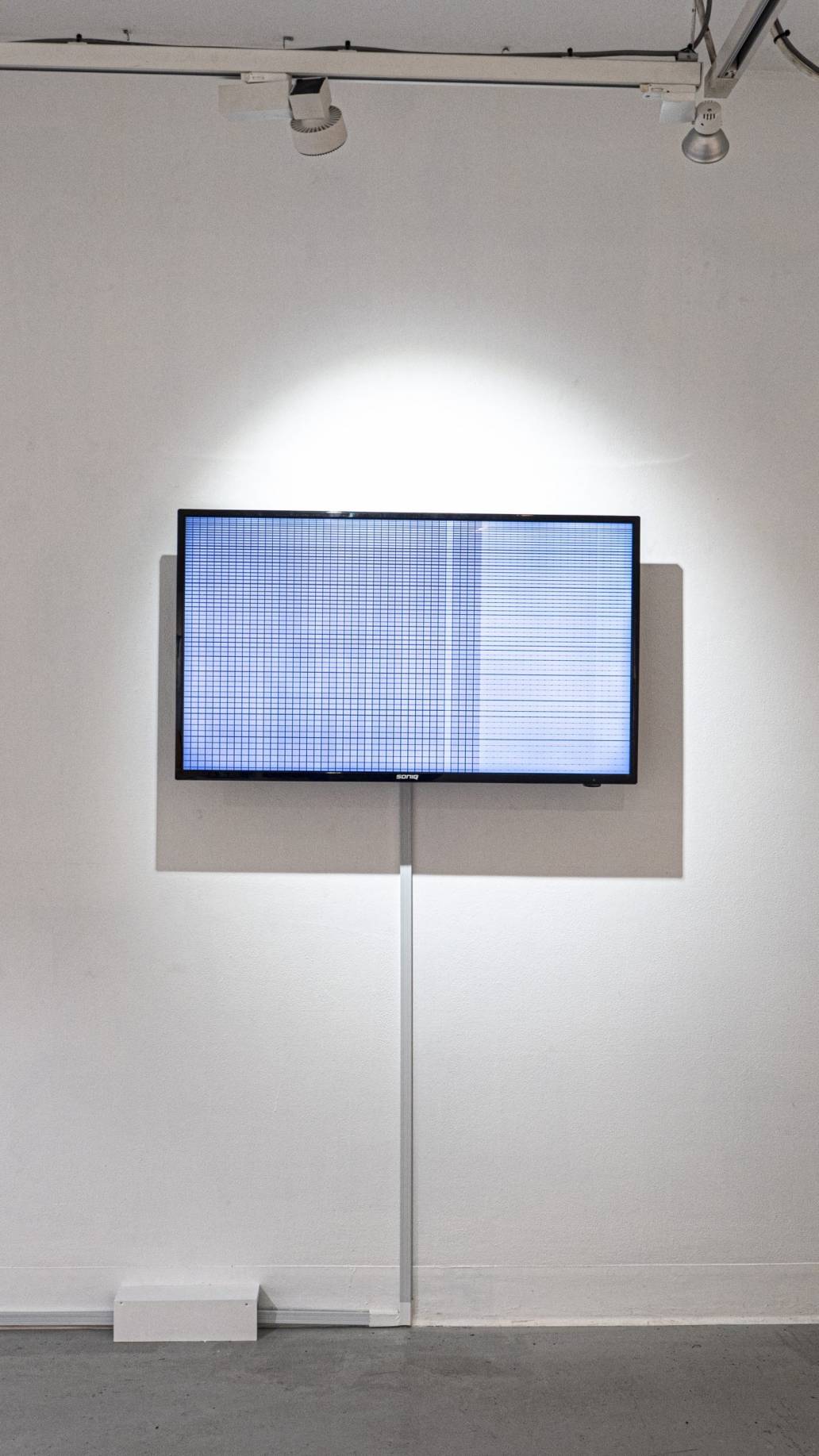
- Artwork Layered space
- Artist Seiichi Kobayashi
- Year 2021
- Medium Moving images and sound
- Size Dimensions variable
- Price Not For Sale
“This pandemic of Covid-19 gave me a chance to explore new fields of art making. Under the lockdown, I couldn’t access to my studio for several months. I decided to create something that can be appreciated on a digital screen with computer, instead of making images on a large canvas with paints. Creative coding invented a new process of creating an image. Without depicting visible elements of real objects, it allows us to make complex visual effects that cannot be created in analog manipulation techniques.
My works revitalised the ideas of the Rinpa school, which is one of the Japanese traditional painting schools and whose style was established in the 17th century during the Edo period. I believe their works reflect Japanese notions towards nature and life as an image in the most sophisticated manner. Their works feature a lot of negative spaces and are compositionally highly controlled and decorative. The brush strokes are fast and rough, which creates beauty from imperfection in their images.”
-
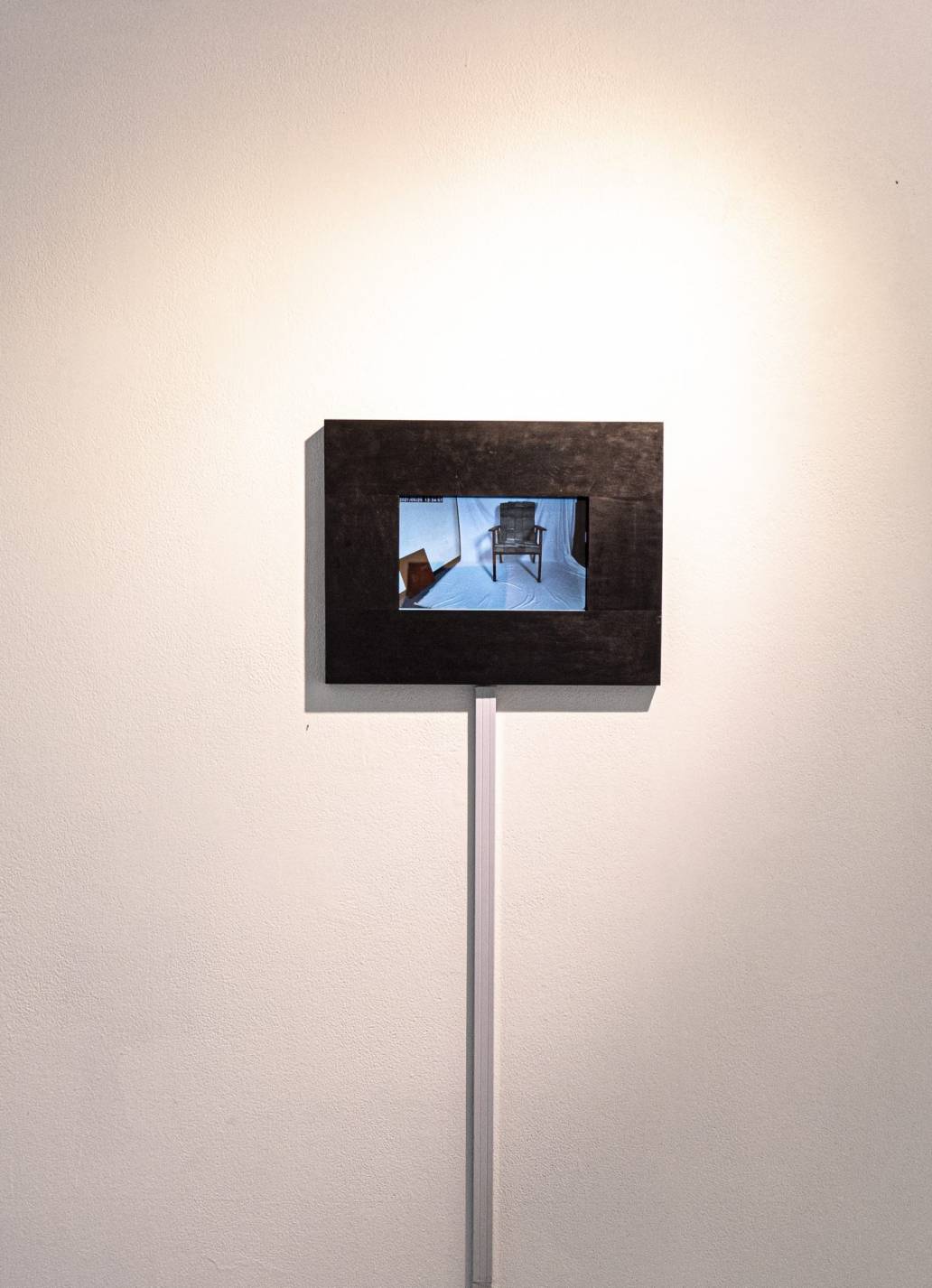
- Artwork Isolation: Kuang's Tile Chair
- Artist Jonathan Kim
- Year 2021
- Medium Real-time streaming video footage being transmitted from Fang-Yi Kuang’s studio in China
- Size Dimensions variable
- Price POA
Catalogue essay
Imagine the wind as Earth’s breath, an intangible vital force made visible only by its agency on all it touches. By its nature, it can never be static. Whether making landfall in the fury of a typhoon or sending gentle ripples across the surface of a pond, it is constantly moving, a dynamic agent for change.
The four winds were personified by civilisations all over the world, each culture ascribing its wind deities with powers that spoke to the way each acted on the lands they traversed. Whether they brought drought, rain, hail or hurricane depended on the terrain and waters they encountered, or on the intensity and position of the sun. Carrying memories of canyons and deserts, valleys and mountains, cities and forests, some winds bring seeds and soft, replenishing rains, while others arrive with such force that they demolish all they touch, inviting renewal, and progress towards sustainability.
Blowing here and there and back again, bending and weaving, the winds transform and are themselves transformed by the journeys they make.
When COVID-19 began closing borders in 2020, the fluid transnationalism of creative exchange was threatened with stasis. The overwhelming uncertainty that came with the pandemic impacted the practice of artists everywhere, whether through restricted travel across familiar borders, restricted access to studio space and materials, or through a renewed interrogation of artistic vision and practice in the light of such cataclysmic change.
East Wind showcases the work of six emerging contemporary artists from Mongolia, South Korea, Japan, China, Vietnam and Tibet Autonomous Region. In curating, as well as contributing work to this exhibition, Korean artist Jonathan Kim invited his fellow UniSA graduates to contribute work they created during COVID isolation. Their experiences and practices vary according to where they were located during this time; while four of the artists remained sheltering in place in Adelaide, Seiichi Kobayashi and FangYi Kuang found themselves unable to return to Australia after their respective visits to Japan and China in the earlier part of 2020, and their work was shaped by different restrictions.
The individual visions of the six artists in this exhibition have been nourished by transcending geographic and cultural borders, as well as borders of the imagination. They each have carried seeds from familial places and fertilised them here on the lands of the Kaurna Nation, where the University of South Australia stands, and watered them with the diversity of their cultural experiences. Bin Bai, Jonathan Kim, Seiichi Kobayashi, FangYi Kuang, Truc Truong and Meng Zhang are united by their shared experience as fine arts graduates of UniSA, and though each carries a familial heritage that is culturally, politically, geographically distinct from the others, their collective representation as emerging East Asian artists affords a feeling of community, the strength in their shared commonality countering the isolation felt not only from the lockdowns of 2020, but from practicing in a contemporary Australian society that has been shaped by the hegemony of white settler culture.
It is this hegemony that situated post-colonial Australia as an outpost of the British Empire, instead of within the more geographically logical Asian region, and which shaped an academy that takes a predominantly Euro-centric approach in the training of visual artists – a position common to many art schools across the non-Caucasian world. While the historic reasons for this cannot be separated from the deep trauma that was inflicted, and continues to be inflicted on First Nations people, this Euro-centric focus on artistic training has informed and enriched the practices of these artists as much as their distinct heritages. The collision of these different perspectives create new dynamics, informing a liminal art practice that embodies fertile dialogue between sometimes paradoxical, oppositional forces. This ambiguity creates openings and opportunities for radical transformation, and radical transformation is what humanity needs in these disruptive times.
While the east wind is seen as a destructive force in some lands lying to the west, in the east, it is welcomed as a herald of spring. The east wind melts the ice. The artists of East Wind have created works that speak to continued transnational exchange and cross-fertilisation of ideas in spite of the stasis engendered by a global pandemic. They are exciting works that form the earliest stepping-stones for their emerging careers as contemporary artists in a changing Australia. We will eagerly watch their developing careers as the future unfolds.
Katherine Tamiko Arguile
Meet the artists & curators
Jonathan Kim was born and raised in South Korea and spent most of his 20s in China and 30s in Australia. Like his nomadic life, Kim’s art contains various cultural elements. Kim’s core research places a deep importance on the relationship between a medium and its environmental factors, named as Gong-gan-seong (spatiality), which has been inspired by Korean artist Lee Ufan’s philosophy of Man-nam (Encounter).
Kim was awarded the Constance Gordon-Johnson Sculpture Prize and Linden New Art Award. Kim completed the British School at Rome Residency and Sauerbier House Culture Exchange Artist in Residence and currently works at the ACE Open studio.
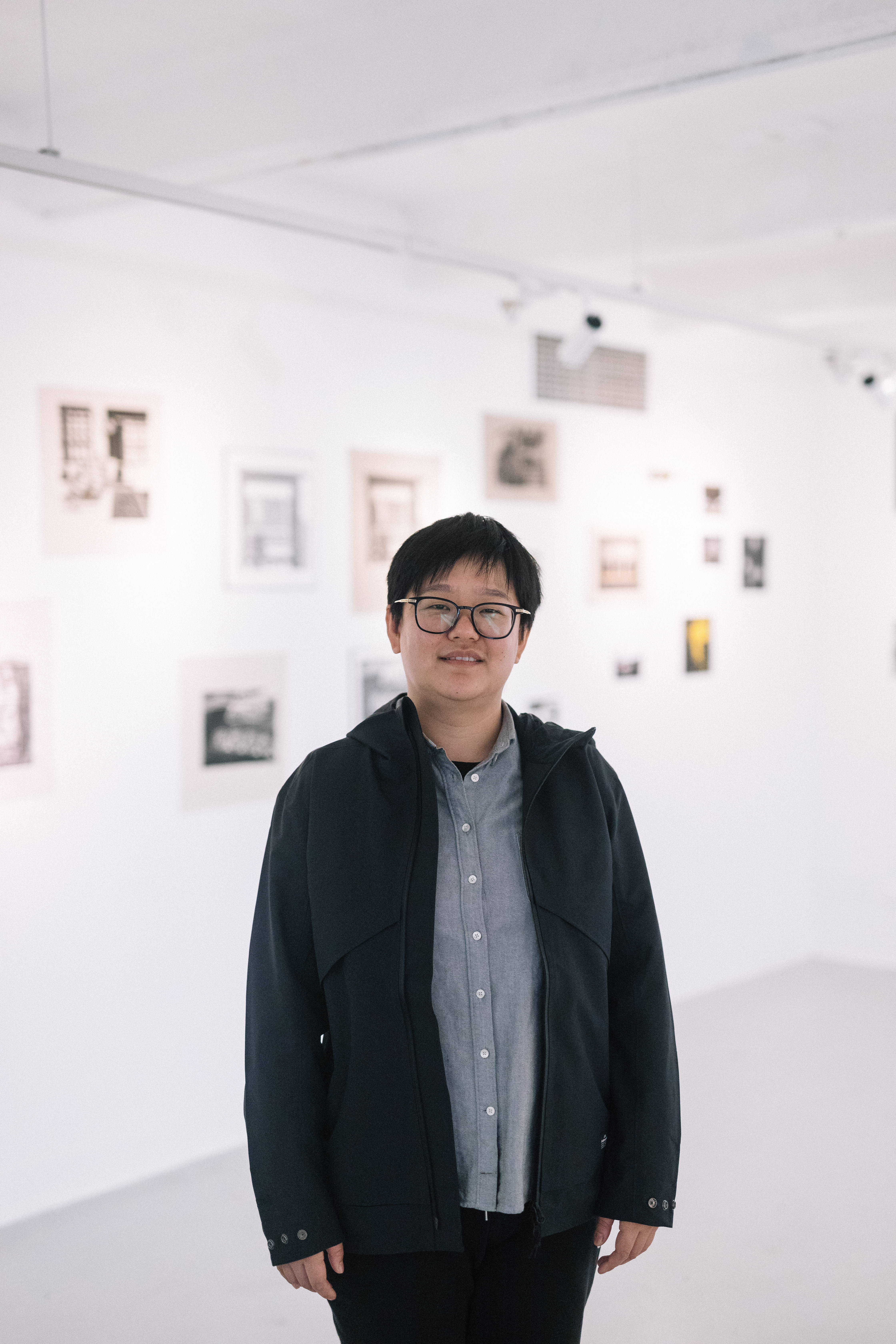
Meng Zhang is a multidisciplinary artist, working in printmaking, drawing, sculpture, and installation.
Meng’s practice is centred around recording observations of daily life and examining connections between people who live in different geographical spaces, as well as the spaces extended by internet connectivity.
Born in Guilin, China, Fang-Yi Kuang, immigrated to Australia in 2006. She graduated from the University of South Australia in 2019 with a Bachelor in Contemporary Art 2019, and is currently living and working in Guilin, China.
Seiichi Kobayashi is a Japanese emerging artist, exploring our changing relationship to images under technological development. He has been creating abstract two-dimensional images through coding and presented them with various media. His complex use of mediums and strict process of image making investigate how each medium and technology works in our appreciation of images. As a Japanese artist, his aesthetic ideas are highly influenced by the Rinpa school, which is one of traditional schools of Japanese painting. His works revitalise the style and the idea of the traditional painting school with contemporary technologies.
Truc Truong is an emerging artist living and working on Kaurna land, exploring differences between Eastern and Western ideas. Working with various mediums, her work interrogates colonialism, exploring aspects of power and displacement, often through experiences and stories lived and retold by her family. Truong explores the use of materials and processes of making through the Du Boisian theory of double-consciousness, not actively looking at which identity to uphold but instead, supporting the maintaining of a ‘two-ness’ through her work.
Bin Bai (aka Gentsu Gyatso) is a multidisciplinary visual artist, who currently works and lives in South Australia. He uses paintings, sculptures, architecture and animated films to explore the transformation of traditional art and the culture in contemporary art realm. Born in Kham, Tibet, he studied art in the art institutions in Chongqing, Kassel and Adelaide and was granted a Master’s Degree in Fine Art and Design in 2004 and 2021 respectively.
Since 2002, Bin has participated in various exhibitions and given talks about his research and practise. By employing digital animation in visualising Tibetan grassroots oral literature, his 26 minutes animated film ‘The hunter and the skeleton’ (2012) was regarded as the first animated film by Tibetan artist and was among the official selections of scores of international film festival.
In parallel, Bin’s paintings and sculptures also look into the transformation of Tibetan art by elevating and representing aesthetics from his understanding of ancestral cultures and the links with our modern times. His latest painting project for his UniSA Master’s study was selected into the Helpmann Academy Graduate Exhibition 2021 and collected by private buyer as well as awarded the Graduate Exhibition Acquisition Prize 2020 by UniSA Creative.

